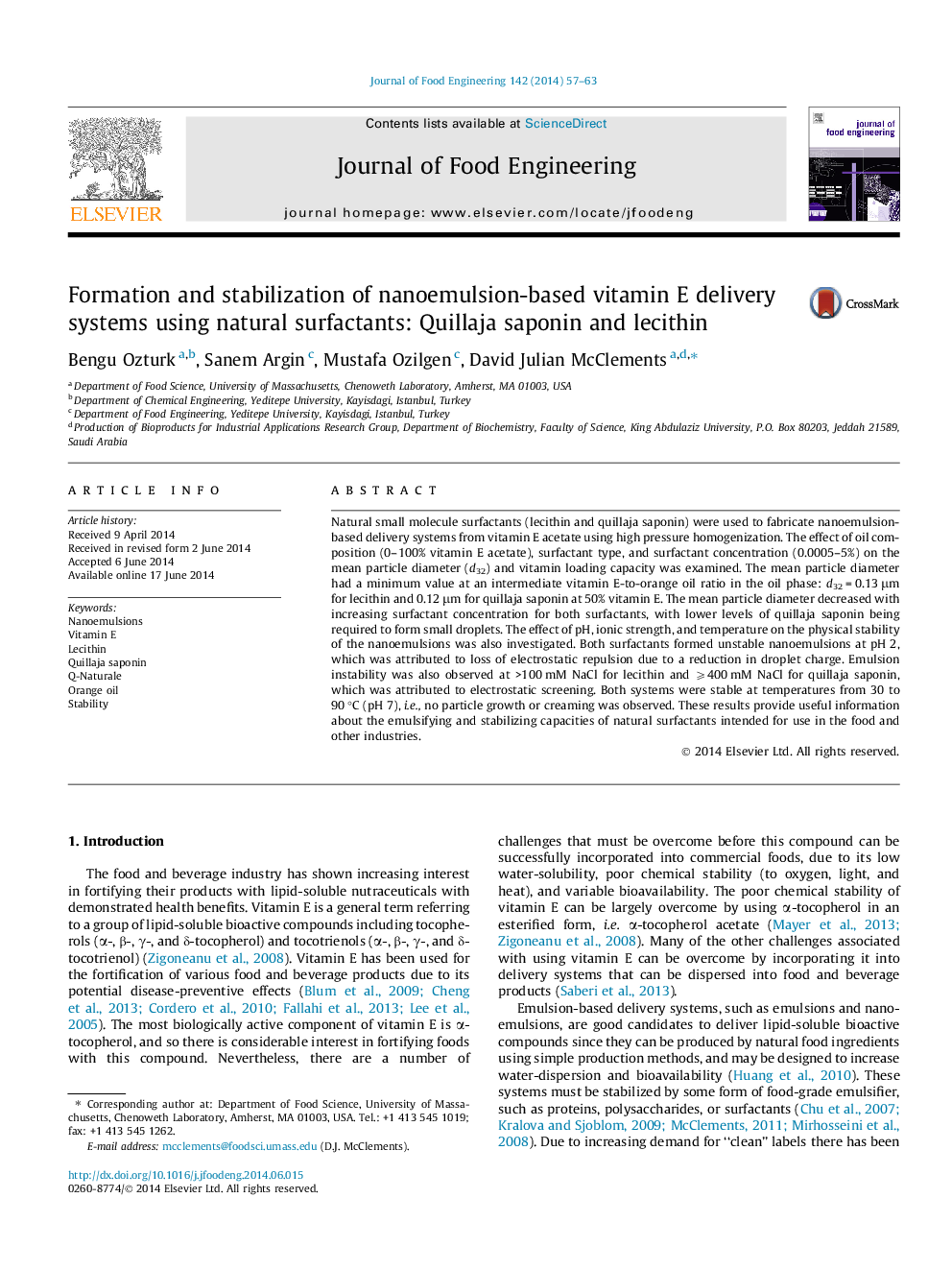| کد مقاله | کد نشریه | سال انتشار | مقاله انگلیسی | نسخه تمام متن |
|---|---|---|---|---|
| 223087 | 464333 | 2014 | 7 صفحه PDF | دانلود رایگان |

• Natural small molecule surfactants were tested: Lecithin and quillaja saponin.
• Both surfactants formed stable nanoemulsions with high vitamin E loading.
• Lecithin emulsions were only stable at pH 7–8 in the absence of salt.
• Quillaja saponin emulsions were stable from pH 3 to 8 and from 0 to 500 mM NaCl.
• Both surfactants were stable to heating from 30 to 90 °C (30 min) at pH 7.
Natural small molecule surfactants (lecithin and quillaja saponin) were used to fabricate nanoemulsion-based delivery systems from vitamin E acetate using high pressure homogenization. The effect of oil composition (0–100% vitamin E acetate), surfactant type, and surfactant concentration (0.0005–5%) on the mean particle diameter (d32) and vitamin loading capacity was examined. The mean particle diameter had a minimum value at an intermediate vitamin E-to-orange oil ratio in the oil phase: d32 = 0.13 μm for lecithin and 0.12 μm for quillaja saponin at 50% vitamin E. The mean particle diameter decreased with increasing surfactant concentration for both surfactants, with lower levels of quillaja saponin being required to form small droplets. The effect of pH, ionic strength, and temperature on the physical stability of the nanoemulsions was also investigated. Both surfactants formed unstable nanoemulsions at pH 2, which was attributed to loss of electrostatic repulsion due to a reduction in droplet charge. Emulsion instability was also observed at >100 mM NaCl for lecithin and ⩾400 mM NaCl for quillaja saponin, which was attributed to electrostatic screening. Both systems were stable at temperatures from 30 to 90 °C (pH 7), i.e., no particle growth or creaming was observed. These results provide useful information about the emulsifying and stabilizing capacities of natural surfactants intended for use in the food and other industries.
Journal: Journal of Food Engineering - Volume 142, December 2014, Pages 57–63